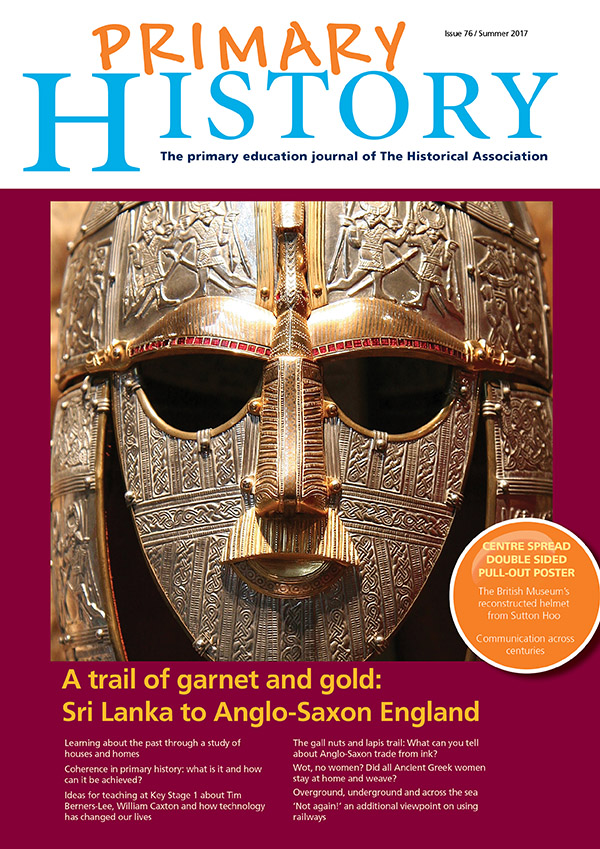Primary History 76: Out now
Journal

The act of writing is a potentially daunting process. It is the source of so much angst during our primary years as we struggle to master the complicated mechanics that will allow us to commit our ideas to paper. The purpose of writing is, of course, communication and this one of the themes in this edition of Primary History.
Nina Sprigge’s article on Tim Berners-Lee and William Caxton looks at how those two great innovators and entrepreneurs used technology to open up the world; spreading ideas and experiences. Alf Wilkinson reminds us of the complicated processes employed in creating illuminated manuscripts where the beauty of the object was in itself an act of worship. Sally Sculthorpe reminds us of the importance of person-to-person communication through letters and cards, investigating the postal system. While this was once something that all children knew about in the past; it is important to consider how Tim Berners-Lee’s idea has fundamentally changed how we communicate. No longer do letters and newspapers have to travel the railways to share ideas and thoughts.
Susie Townsend has provided some further ideas for investigating the railway station as a feature of your local environment – this time with the focus on Key Stage 1. Helen Crawford also allows us to reconsider investigation into houses and homes but from the Early Years perspective. Ilona Aronovsky provides an alternative view of the Anglo-Saxon period by using their treasures to give us insight into the extensive trading links of the time.
A more marginal history is also the focus of Alf Wilkinson’s article on women in Ancient Greece. We continue with the diversity theme with another assembly idea linked to refugee stories, this time that of Sir Mo Farah. Kay Topping shares some of the ways that Egyptian mummies can be investigated although not many of us have a ‘dummy mummy’ available! Tim Lomas is on hand to provide advice for subject leaders who are grappling with the idea of coherence across the curriculum, defining the concept and considering how to address it.
Sharing thoughts, ideas and emotions are fundamental human activities. From the very earliest times we have been compelled to record our experiences through images and text. While this is a powerful imperative it can also expose our vulnerabilities. Several of the articles in this edition were from first-time contributors. I was struck when receiving the articles by the accompanying comments: ‘Here is the article. I hope you like it. I am not very sure if it is any good!’ The authors showed a generosity of spirit in wanting to share ideas and expertise but a level of doubt in their own abilities. We all want to be judged as successful but it can be uncomfortable to commit thoughts to paper for others’ approval. I am sure that you will agree with me, however, in finding the articles presented both interesting and inspiring. Perhaps you feel that you might like to share some of your ideas. If so please contact the editorial team. We are always looking for new contributors.

